|
Join me at Gatorland for a ton of learning. If you want to learn to use your flash, you will not want to miss this one. Click on the composite image to enjoy a larger version. Click on the composite to enjoy the larger size. |
The Gatorland Short Notice Saturday Full-Day In-the-Field Workshop
Saturday May 3, 2014. 7:15am till 10:15am & 4:00pm till dusk. Lunch, image review, and Photoshop session included. Limit 6. A very small group is again likely: $399.
The cost of your Gatorland Photographer’s Pass is not included.
Chicks in nests likely. Breeding plumage Cattle and Snowy Egrets. And tons more. You will learn to spot the good situations, to choose the best perspective, to see and understand the light, to get the right exposure every time after making a single test exposure, and to design pleasing images by mastering your camera’s AF system. A big part of the above is that you will learn how and why you must work in Manual mode 90% of the time at Gatorland.
At lunch we will review my images, take a look at five of your best images from the morning session (for those who opt to bring their laptops), and process a few of my images in Photoshop after converting them in DPP. That followed by Instructor Nap Time.
Payment in full via credit card is due upon registering. Please call Jim or Jennifer at 863-692-0906 to register.
The Streak Continues: 146
I will publish this post just after 6:00am Amsterdam time, just after midnight on the east coast. We enjoyed another great morning at Keukenhof–the place is amazing, and then enjoyed a touch of Holland on our afternoon visit to Delft. Not to mention one of the best meals that any of us had ever enjoyed.
This post marks 146 straight days with a new blog post. With so many folks getting in the habit of using our B&H links and our Amazon logo-links why quit now? To show your appreciation for my efforts here, we do ask that you use our the B&H and Amazon affiliate links on the right side of the blog for all of your purchases. Please check the availability of all photographic accessories in the BIRDS AS ART Online Store, especially Gitzo tripods, Wimberley tripod heads, and the like. We sell only what I used, tested, and can depend on. We will not sell you junk. We know what you need to make creating great images easy and fun. And we are always glad to answer your gear questions via e-mail.
You can find the following items in the store: Gitzo tripods, Mongoose M3.6 and Wimberley heads, plates, low feet, and accessories, flash brackets, , Delkin e-film Pro Compact Flash Cards, LensCoat products, and our unique line-up of educational materials including ABP I & II, Digital Basics, Site and Set-up e-Guides, Canon and Nikon Camera Users and AF e-Guides, and MP-4 Photoshop video tutorials among others.
I would of course appreciate your using our B&H affiliate links for all of your major gear, video, and electronic purchases. For the photographic stuff mentioned in the paragraph above we, meaning BAA, would of course greatly appreciate your business. Here is a huge thank you to the many who have been using our links on a regular basis and visiting the BAA Online store as well.
This blog post took about 1 1/2 hours to create. Enjoy!
|
This backlit Cattle Egret head portrait was created with the Gitzo 3532 LS carbon fiber tripod, the Mongoose M3.6 head, the Canon EF 600mm f/4L IS II USM lens, the Canon 2x EF Extender III (Teleconverter), and the Canon EOS 5D Mark III. ISO 400. Evaluative metering +1/3 stop as framed: 1/400 sec. at f/11 in Manual mode. Color Temperature: AWB. Quasi flash as main light with the Better Beamer at +1/3 stop in ETTL with High Speed Sync, the Canon Speedlite 600EX-RT with the Canon CP-E4 Compact Battery Pack for faster re-charging times. Mongoose Integrated Flash Arm with the Canon OC-E3 Off Camera Shoe Cord 3. Central sensor (by necessity) Expand/AI Servo/Rear Focus on the base of the bird’s bill was active at the moment of exposure. Click here if you missed the Rear Focus Tutorial. Be sure to click on the image to see a larger version. Image #1: Over-flashed…
|
Flashing the Dark Side
Image #1 is a JPEG that accurately represents the original RAW image capture. I set the flash to +1/3 stop to light what was in effect the shaded side of the bird’s face. The image definitely looks flashed and perhaps over-flashed. Perhaps -1/3 stop on the flash would have been a better choice.
|
This backlit Cattle Egret head portrait was created with the Gitzo 3532 LS carbon fiber tripod, the Mongoose M3.6 head, the Canon EF 600mm f/4L IS II USM lens, the Canon 2x EF Extender III (Teleconverter), and the Canon EOS 5D Mark III. ISO 400. Evaluative metering +1/3 stop as framed: 1/400 sec. at f/11 in Manual mode. Color Temperature: AWB. The flash did not fire as it did not have enough time to re-cycle even with the Canon CP-E4 Compact Battery Pack Central sensor (by necessity) Expand/AI Servo/Rear Focus on the base of the bird’s bill was active at the moment of exposure. Click here if you missed the Rear Focus Tutorial. Be sure to click on the image to see a larger version. Image #2: Flash Did Not Fire
|
Flash Did Not Fire
The image immediately above was taken just an instant after the opening image. Again, this is a JPEG that accurately represents the original RAW image capture. As the flash did not fire the bird’s face appears dark. Had I been fast enough to add some light–not possible by the way, that would have left the rim light well over-exposed…. On the surface here it seems that the first image, the over-flashed image, would sure be your first choice. Or not?
Image #3: The Optimized Version of Image #1 |
The Optimized Version of Image #1
Image #3 is the optimized version of Image #1. Please compare this image carefully with Image #4 below.
Image #4: The Optimized Version of Image #2 |
The Optimized Version of Image #2
Image #4 is the optimized version of Image #2. Please compare this image carefully with Image #3 immediately above.
The Questions
Question 1: Which image features the strongest post, Image #3 or Image #4? Why?
Question 2: Which image has the smoothest white tones on the bird’s face, Image #3 or Image #4?
Question 2: Overall, which optimized image is stronger, Image #3 or Image #4? Why?
Using Flash: First Impressions Can Be Deceiving…
It is important to realize that when you are comparing similar images created with and without flash that you must compare the optimized images rather than the original captures….
BTW
There is a tall viewing tower at Gatorland that overlooks the large gator moat. Climbing the tower with your gear can offer some good and different photographic opportunities. If you are working from the swamp boardwalk and have the tower in your background, it will, 9 times out of 10, ruin an image. In the images here, the shaded tower provided the perfect black background for these strongly backlit Cattle Egret images. Joining any IPT will teach you to recognize the good situations that everyone else walks right by….
Another Used 400 DO For Sale
I will be offering a very well taken care of 400 DO lens for sale when I get back. If you are interested, please shoot me an e-mail. The lens is currently owned by Peter Kes.
|
All of the images created at the St. Augustine Alligator Farm and copyright Arthur Morris/BIRDS AS ART From top left clockwise to center: Snowy Egret pair in breeding plumage, breeding plumage Cattle Egret with fill flash, large Great Egret chicks in the nest, killer breeding plumage Snowy Egret displaying, flash-as-main light Great Egret chick happy to see mom, Little Blue Heron chicks, Cattle Egret breeding plumage head portrait, flash flight Wood Stork with nesting material, Great Egret landing at the nest, large Snowy Egret chicks. Click on the image to enjoy a larger version. |
St. Augustine Alligator Farm Short-Notice IPT. 3-FULL DAYS. Early entry/Late stay. May 5-7, 2014. Meet and greet at 8pm on Sunday May 4: $1299. Two Great Leaders: Arthur Morris and Denise Ippolito
This trip needs four to run.
Breeding herons, egrets, and Wood Storks. Eggs and chicks in the nest. Some fledged young possible. Breeding behaviors including displaying and copulations. Flight and flash flight. Great Egret, Snowy Egret, Little Blue Heron, Cattle Egret, Tricolored Heron, Wood Stork. Early May rocks at the Farm as the weather is usually gorgeous and there should be lots of both small and large chicks in the nest. And you avoid the possibly oppressive heat of June and July.
Includes in-the-field instruction, early entry, late stay, $5/person late-stay gratuity, informal, small group Photoshop and image review sessions. Three lunches.
Not included: your lodging, your St. Augustine Alligator Farm photographer’s pass ($79.95 for the year); we will be more than glad to pre-order your pass for you. Please let us know when you register.
What you will learn:
How to see the good situations.
How to best avoid the clutter of a rookery by choosing the very best perspective.
How to properly evaluate the histogram and come up with the right exposure every time after making a single test exposure
How to see and understand the light.
How to to design pleasing images by mastering your camera’s AF system.
Why you must work in Manual mode 95% of the time when photographing at a rookery and how to do it.
How to evaluate and process your images.
Via intensive instruction how to use fill flash flash as main light, and Manual flash.
Flash flight techniques including the necessary use of high speed sync.
And tons more.
Please call Jim or Jen at 863-692-0906 to hold your spot with your non-refundable $299 credit card deposit and then put your check in the mail along with your signed registration form; you can find the form here.
Suitable airports: Jacksonville (JAX), Daytona Beach (DAB), Orlando MCO).
We look forward to seeing you in the nation’s oldest city for three days of fun and learning.
Support the BAA Blog. Support the BAA Bulletins: Shop B&H here!
We want and need to keep providing you with the latest free information, photography and Photoshop lessons, and all manner of related information. Show your appreciation by making your purchases immediately after clicking on any of our B&H or Amazon Affiliate links in this blog post. Remember, B&H ain’t just photography!
….. …..
Typos
In all blog posts and Bulletins, feel free to e-mail or to leave a comment regarding any typos, wrong words, misspellings, omissions, or grammatical errors. Just be right. 🙂

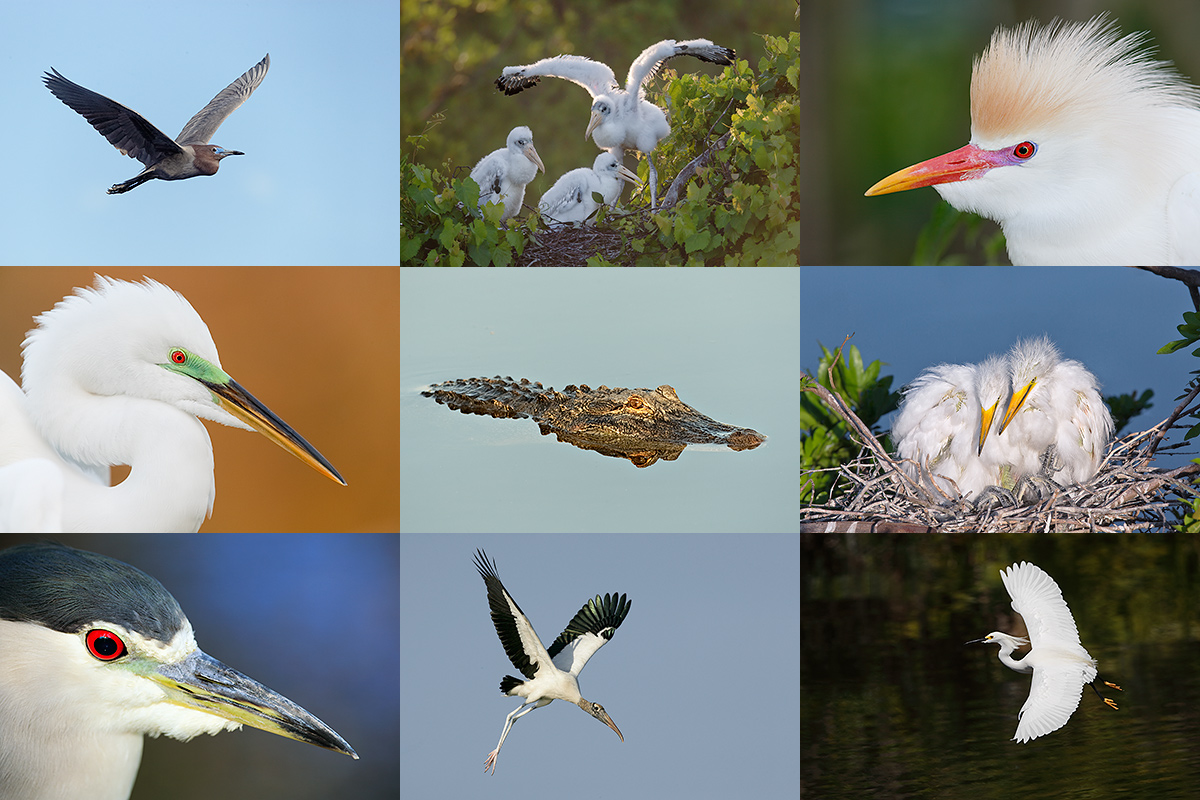
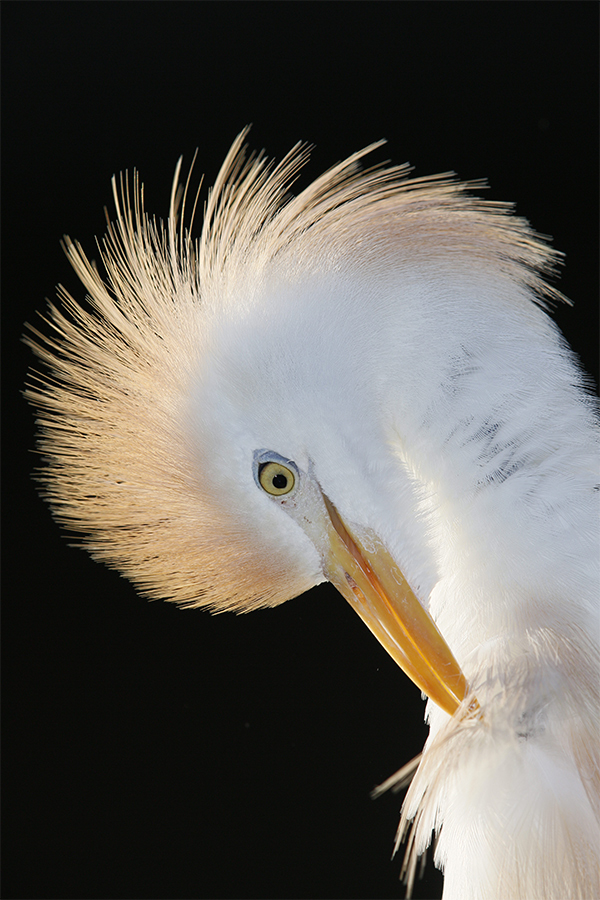
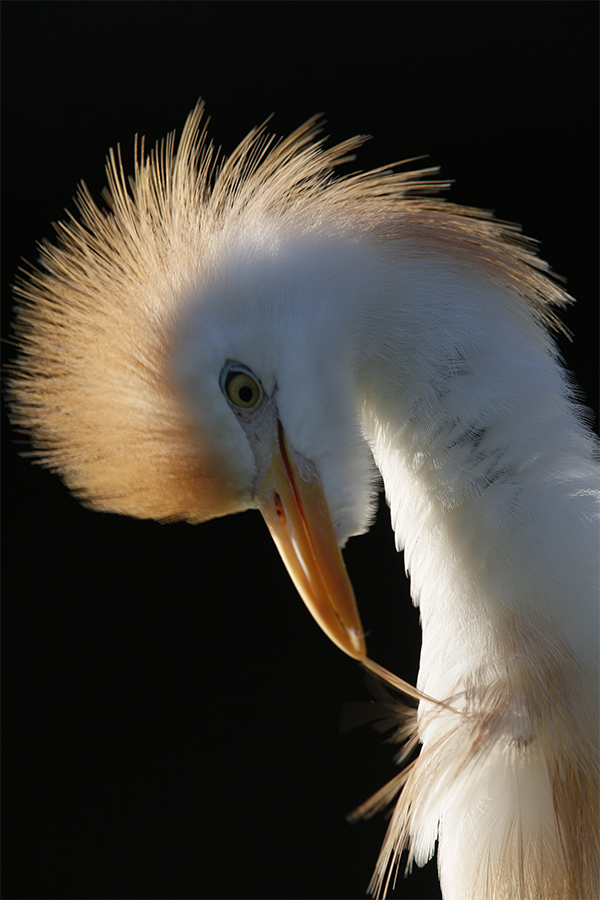
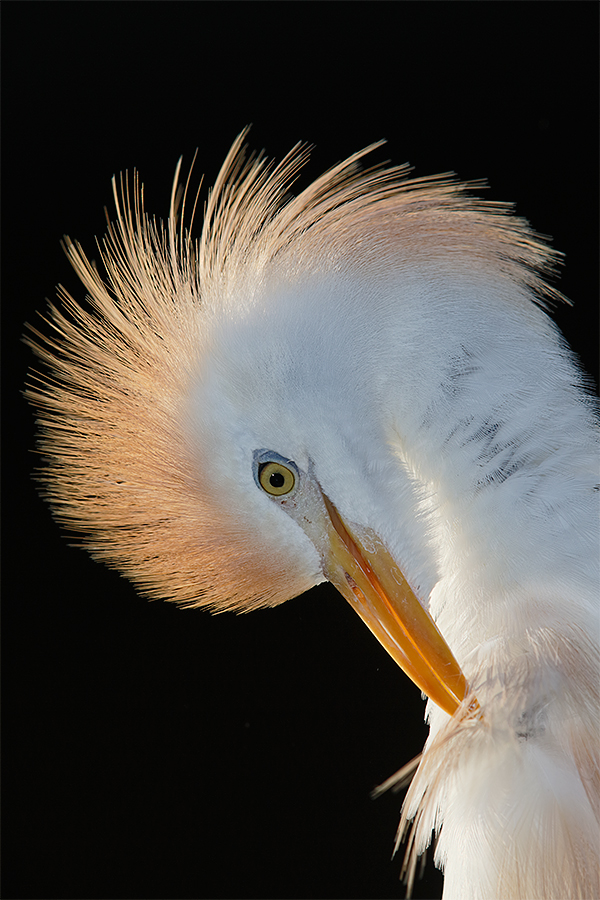
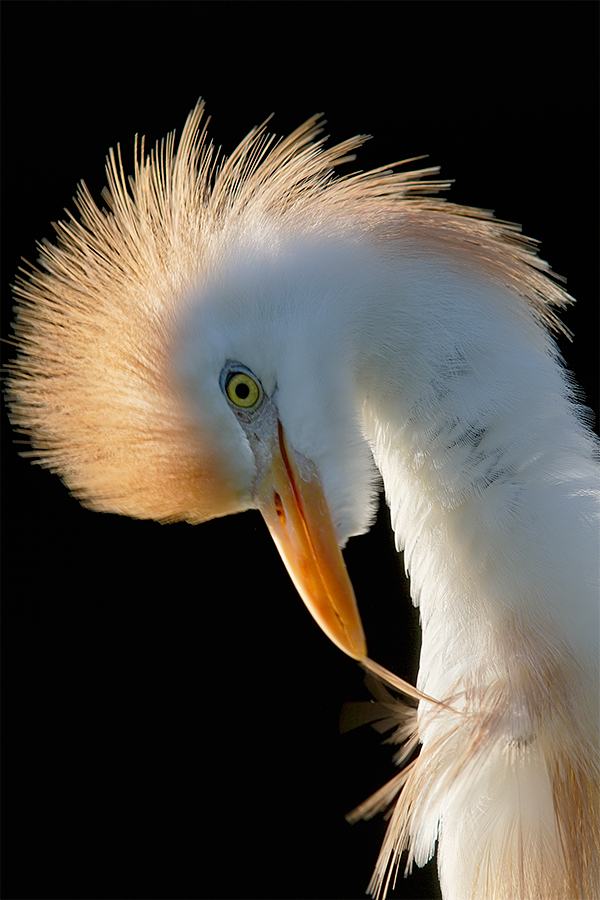
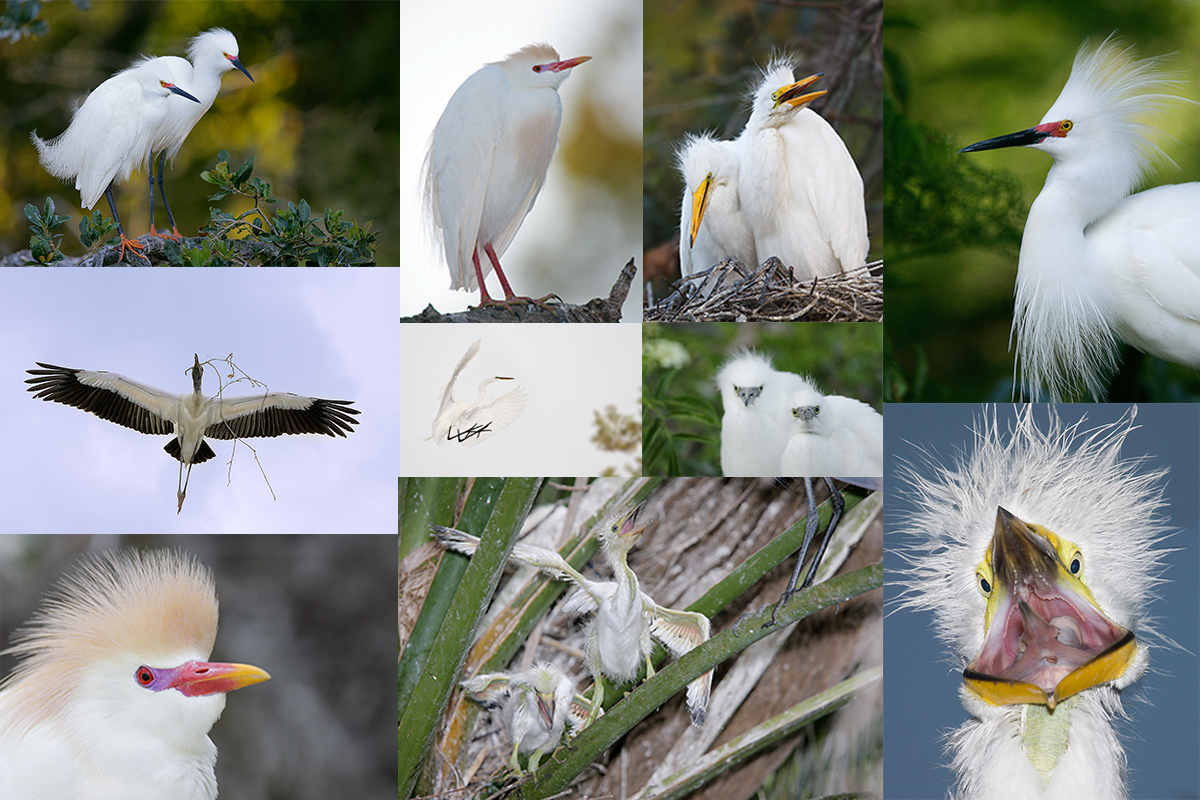













Image #4 is the best post. I don’t like the whites on the birds face in image #3 to edgy.
Image #4 has the smoothest white tones.
Image #4 is the stronger for the above reasons.
Agree on all counts. artie
Forgot to add, I like the sharpness of 3 better as well
1-image 3 is stronger to me. In 3 the bird is obviously preening. In 4, with just a quick look, that might be a brown pine needle etc. in the bird’s bill. But I’m not sure just what “post” means in “strongest post, Image #3 or Image #4”.
2-There is less shadow on image 3’s face, still with nice detail, which I like. I like the neck feathers with less contrast in 4.
3-So 3 is stronger to me especially if it had the neck feathers optimized as in 4
Ignoring the adorable loose feather in 4, I like the highlight and extra sharpness in the crest in 3 but feel 4 has a more natural look to it. Also the black markings (feathers?) on the neck are less evident in 4.
Agree.
IMHO most wildlife photographers find that most wildlife does not react in any way to flash.
I have used fill flash and flash at night on numerous occasions and not once has an animal or bird displayed the slightest sign of awareness let alone distress or discomfort.
Were an animal or bird to find flash light disturbing it would take flight or show some sign of avoidance,fear or aggression.
I have never seen that, nor has anyone I have ever spoken to on the subject.
If it was a problem for wildlife, responsible wildlife photographers wouldn’t do it.
What some wildlife does find disturbing is strong continuous light sources at night.
These can severely an animal’s night vision and make it vulnerable to predators, traffic, etc..
There are enough problems in the world without inventing new ones.
Quazi is, I believe, well-meaning but misguided
Agree on all counts. See my answer to Quazi below. artie
Hi Artie I looked at the pics and was getting ready to reply when I came upon the first post. I do not have a lot of experience with flash but have never seen any negative responses.When you get to my age you think you have seen it all. Guess not.Have we gone off the deep end? No more fishing or hunting. Maybe we should quit making cameras and batteries.Well I kept it somewhat respectful. Have to go and get my asparagus shoots For breakfast. Have a nice day.
Quazi is a nice man and so are you :). artie
Hi Arthur, just wanted to leave a huge thanks for all the work on the incredible blog and to say that i really enjoy the image of the backlit cattle egret. That´s a lovely specie (also present here in Portugal).
Hi Luis, You are most kind : Many thanks. DO consider joining us on the UK Puffins IPT. artie
Guru, with full respect to your untiring efforts for highest quality photography, I would like to make a humble submission as a conservation activist.
The sudden burst of intense light causes discomfort to wild mammals and birds. Even some of them may get blinded for a while. That’s why wildlife biologists are not highly supportive of using flash unless the situation makes it mandatory.
This is for your kind information. Regards.
Quazi
Thanks for sharing your thoughts. I have seen birds and animals react to flash only very rarely, and then, only with the first shot. And even then, there is no way to tell if they are reacting to the sound of the shutter (as they sometimes do when you are not using flash), or to the flash itself. As for biologists, don’t get me started on the disturbance that they cause :). artie